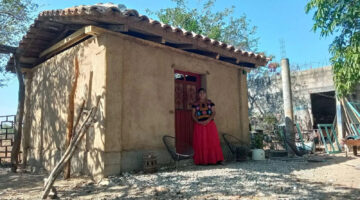The public administrations have a huge constraint to work out affordable housing solutions: financing them. To do so, they have to increase taxes. Yet, this means in the vast majority of cases facing opposition. Vancouver offers a different narrative. Vancouver is proof of the ability to enforce new taxes to create a fund for affordable housing if the proper political coalition is formed.
In June 2016, data from Apartment List revealed that Vancouver ranked third nationwide for the swiftest rent hikes. Situated adjacent to Portland, OR, Vancouver experienced a staggering 38 percent surge in average rents from 2011 to 2016, juxtaposed with a mere 3 percent uptick in median income. The mounting pressures in Portland's housing market propelled Vancouver's population and housing demand, catalyzing gentrification and the subsequent displacement of numerous low-income households. By 2016, the Affordable Housing Task Force of Vancouver disclosed alarming statistics: an estimated 11,675 households with very low incomes were grappling with housing cost burdens, while nearly 700 individuals resorted to shelters in Clark County, where Vancouver resides. Moreover, over 2,000 children and youths found themselves homeless or lacking stable accommodations, many resorting to couch-surfing or enduring overcrowded conditions. The Task Force underscored a notable surge in households seeking rental assistance, prompting the Vancouver Housing Authority to replace its traditional waitlist with a lottery system limited to households facing the most acute needs.
In response to these distressing figures, the Vancouver City Council declared a housing emergency, a move sanctioned by State law, enabling the City to propose a ballot measure for a property tax levy to establish an affordable housing fund. The levy, anticipated to amass $6 million annually for seven years spanning 2017 to 2023, aims to aid individuals at risk of homelessness and foster the creation and preservation of affordable housing for residents with incomes at or below 50 percent of the area median. The City aims to develop 336 affordable housing units, safeguard 454 units, furnish rental assistance to 1,500 households to prevent evictions, and augment the count of shelter beds within the city. On June 20, 2016, the City Council unanimously greenlit the inclusion of the property tax proposition on the November ballot.
Anticipating a public hearing on the proposed property tax levy, personnel from the City's Community and Economic Development Department conducted surveys and convened several public meetings to gauge community sentiment regarding the tax proposal and the affordable housing fund. Although a segment of Vancouver residents voiced resistance to heightened taxes, a substantial majority emphasized the City's obligation to confront the housing crisis. To garner support for the levy, the Bring Vancouver Home Coalition emerged. Comprising nonprofit and for-profit housing developers, homeless service providers, mental health and healthcare professionals, and education advocates, the Coalition raised over $100,000 to orchestrate a public outreach campaign bolstering the levy. Employing professional campaign staff, the Coalition orchestrated a multifaceted strategy encompassing door-to-door canvassing, website dissemination, and cable television advertisements advocating for the affordable housing fund. Additionally, the Coalition convened four community forums and engaged with neighborhood associations, churches, and advocacy groups championing fair housing and combating homelessness.
Resistance to the tax levy primarily stemmed from real estate agents, for-profit developers, and residents apprehensive about their ability to afford escalated property taxes. To assuage concerns, the City implemented exemptions for specific groups from the tax burden, including low-income residents, individuals with disabilities earning below $40,000, and seniors reliant on fixed incomes. These provisions averted burdening the very residents the levy aimed to assist. Furthermore, the City facilitated for-profit developers' access to a portion of the funds for housing development, garnering support from developers and residents who might have otherwise opposed the proposition. In November 2016, the levy secured passage with 57.6 percent of voters' support. Over the subsequent six years, property owners would be taxed $0.36 per $1,000 of assessed property value, equating to $180 annually for a property valued at $500,000.
The property tax levy took effect on January 1, 2017, with the City's Community and Economic Development Department entrusted with managing the funds garnered. Subsequently, the Department has been disbursing grants from the affordable housing fund to developers and service providers. The City fosters resident engagement with the affordable housing fund throughout its funding process, with the Affordable Housing Task Force inviting businesses, nonprofits, real estate agents, and faith-based organizations to participate in a community review panel. Applications undergo scrutiny by city staff and the community panel, appraised according to criteria prioritizing applicants with pertinent experience and a demonstrated commitment to equity. The Task Force diligently monitors and reports data on the outcomes of affordable housing fund utilization, encompassing the tally of preserved and created housing units and the number of individuals assisted by income category. Between 2017 and 2019, the City realized the creation of 137 housing units, preservation of 7 units, provision of rental assistance to 549 households, and addition of 30 new shelter beds for homeless households via the affordable housing fund. Notably, 78 percent of assisted households exhibited incomes at or below 30 percent of the area median.
Through raising awareness of its housing crisis and garnering support from property owners, Vancouver, WA, succeeded in passing a property tax levy to directly tackle the escalating homelessness attributable to soaring housing costs and burgeoning development. Local fund generation facilitated a prompt response to heightened housing needs, enabling the City to target funds to areas of immediate exigency, such as eviction prevention and shelter expansion, while simultaneously fostering housing creation and preservation for the long term.




